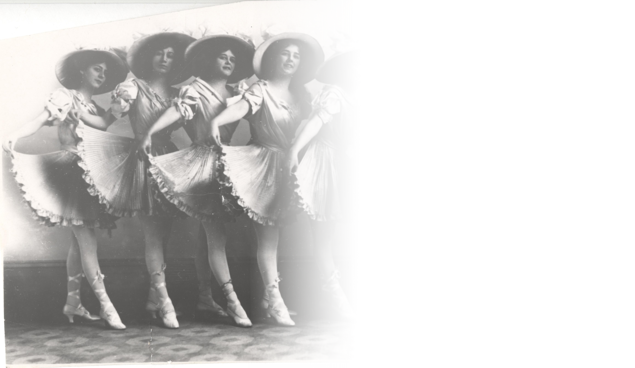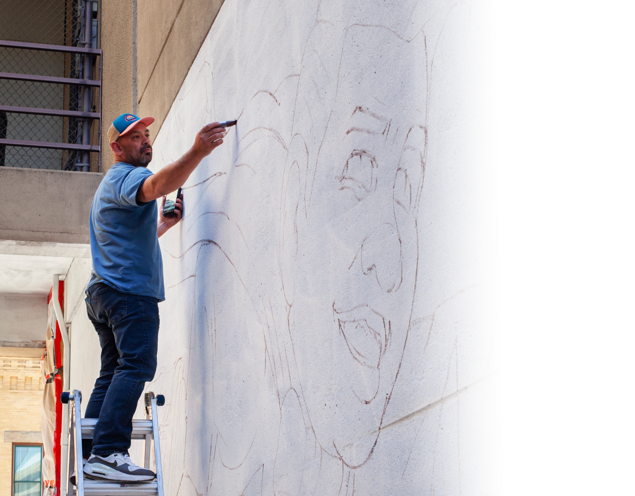Becoming Boise


The city of Boise sits at a unique crossroads. Established in 1863 along the Oregon Trail, the city exploded out of the high desert and has witnessed a long history of dynamic change and community growth. While Boise was first built and settled by pioneers, miners, and entrepreneurs from around the world, this landscape has been home to humans from time immemorial. A broad and rich tapestry of cultural and ethnic identities have been represented throughout Boise’s past, and preserving this diverse history is crucial to creating a more welcoming and inclusive community into the future.

Indigenous People of the Boise Valley
For thousands of years, Indigenous people occupied the Boise Valley and Snake River Plain in southern Idaho. Bands of Northern Shoshone, Bannock, and Northern Paiute people lived in these areas, migrating with the seasons and following food supplies and other resources across the region. The Boise Valley was an important gathering place, particularly for the Shoshone, who migrated there in the autumn for salmon spawning and made their winter encampments. On the east end of the valley near present-day Table Rock, Indigenous people made ritual use of the geothermal springs and buried their dead in the hills above the plain. Today, Eagle Rock Park is a central part of an annual gathering known as the Return of the Boise Valley People, where descendants of the original inhabitants of the valley meet to share stories, enjoy traditional foods, and honor their ancestors.

The Arrival of White Settlers, 1811-1860
In 1811, an expedition of white explorers entered the Boise Valley, and soon after, fur trappers and traders flocked to the area. Inspired by the sight of the tree-lined river cutting through the high desert, white explorers named the region for these woods. Labeled "Wood River" by native English speakers and the "Boise River" by French speakers, after the French term boisé, meaning wooded, the French designation stuck by 1834, when Fort Boise was established near the confluence of the Snake and Boise Rivers. This (nonmilitary) outpost supported fur trappers and traders, and by the 1840s, Fort Boise was a vital stop for travelers on the Oregon Trail needing food and other supplies. Increased traffic along the Oregon Trail led to more contact and more conflict between Indigenous tribes and white settlers. The United States responded to this conflict with military retaliation, particularly after gold was discovered in the mountains and sparked a frenzied rush of people into Idaho Territory.

Gold, Grit and Growth
In August 1862, explorers struck gold in the mountains above the Boise Valley, about 25 miles northeast of the future Boise city. Within months, thousands of people descended on these gold claims and built mining towns nearly overnight. In the Boise Valley, merchants and entrepreneurs followed the overwhelming demand for supplies and set up businesses to support miners and ship food, equipment, and other materials into the mountains.
Sensing the potential for rapid growth, a group of businessmen met on July 7, 1863, to organize a small town they called Boise City. They set aside plots of land along what is now Main Street between 5th and 10th streets, and designated parcels of land to construct public buildings. Sandstone was quarried from the base of Table Rock for construction and by the fall of 1863, Boise City had over 700 residents, with the promise of many more to come.

Faces of Change
Once Boise City was officially established in 1863, and with a gold rush underway in the Idaho Territory, the U.S. government dispatched soldiers to remove Native American people still residing in the Boise Valley. A combination of vigilante forces and military efforts pushed Indigenous people into the foothills or away south of the town. Outbreaks of measles and tuberculosis killed hundreds of people, and in March 1869, U.S. military forces marched the remaining Indigenous people to Fort Hall, in eastern Idaho, and the recently established reservation there. Today, the City of Boise still stands on the ancestral, cultural, traditional, and unceded territory of the Shoshone, Bannock, and Northern Paiute people.
Boise continued to grow and change as people from around the world moved to the new city hoping to strike gold or to capitalize on business opportunities that arose alongside the mining industry. Census records show boarding houses full of people from the Basque Country, Central America, Japan, and eastern Europe within a few city blocks. In 1870, Chinese people made up over a quarter of Idaho’s population, and Boise saw the development of not one, but two different Chinatowns. A broad and rich tapestry of cultural and ethnic identities have been represented throughout Boise’s past, and preserving this diverse history is crucial to creating a more welcoming and inclusive community into the future.

Balancing Progress and Preservation: Boise Urban Renewal
Boise has grown and changed dramatically from its founding, but much of its historic landscape has been lost. During the 1970s, many downtown buildings were demolished to make way for new businesses and surface parking lots. Urban renewal, or the process of reviving or modernizing cities, targeted many of Boise’s diverse neighborhoods, resulting in the destruction of Chinatown, the redevelopment of the River Street neighborhood, and the near-total loss of residential architecture along Grove Street. Small parts of the Basque district, and some iconic landmarks including the Egyptian Theatre were saved from demolition. Today, through preservation, public art, and collection efforts, the City of Boise works to reconnect residents with many of these lost historic and cultural spaces to foster a greater understanding and appreciation of the diverse community that built and sustained the city for generations.
Did you ever wonder...
When white fur traders entered the valley, they were drawn to the tree-lined river that flows through the high desert. These trees inspired the name of this river, but the name changed depending on what language the traders spoke. Native English speakers called it the "Wood" or "Wooded" River, but French-speaking fur trappers referred to the "Boise" River, using the French term boisé, meaning wooded.
"Boise" became the more widely used name among white settlers and traders, especially after the Hudson's Bay Company established their trading post, Fort Boise, in 1834. This landmark appeared on many maps of the region and became an important supply destination for travelers on the Oregon trail.
In 1863, a group of prominent landowners and businessmen gathered to officially create the city. They chose the name "Boise City," which remains the formal name, but the term "city" is often dropped, leading to the common usage of just "Boise" or "City of Boise."
Boise City was founded on July 7, 1863, by a small group of men gathered in a cabin belonging to Thomas Davis and William Ritchie. The group drew up a plat map with individual lots of land for homes and businesses. The resulting city plat included ten blocks which fronted Idaho Street to the north, Grove Street to the south, and Fifth and 10th streets to the east and west.
Idaho's second territorial legislature, which convened in Lewiston, Idaho, passed a bill to locate the capital of Idaho Territory in Boise effective December 24, 1864.
Boise was officially incorporated on January 11, 1866. Although the city was founded in 1863, it wasn't until 1866 that the city adopted its charter, outlining the rules and powers of city government.
*This site is a living resource; while it provides valuable information, it is not exhaustive. New content and updates will be added regularly.










